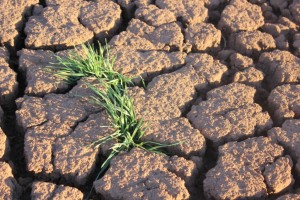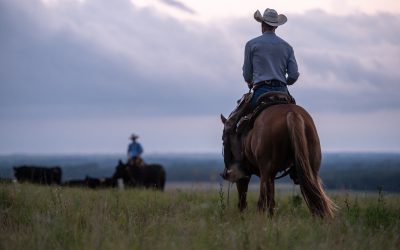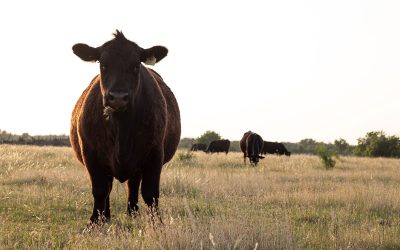
THINGS LOOKING UP, OR STILL BONE DRY?
 Last Friday, Steve was feeling optimistic — and curious if others felt the same. He posed this question on the email-based discussion list, Black-Ink:
Last Friday, Steve was feeling optimistic — and curious if others felt the same. He posed this question on the email-based discussion list, Black-Ink:
“Here in northeast Kansas, 10 inches of rain in a month have restored pastures, ponds and hope. If it shuts off and turns hot later this month, we could be right back in trouble, but we are cautiously optimistic now. Where you are,
how have pasture conditions changed this spring and what are prospects going into summer? What’s the outlook for hay crops?”
List members from across the U.S. chimed in, sharing reports such as:
- Moderate pasture conditions. Receiving an abnormally high amount of phone calls for pasture and hay. – Big Sandy, Mont.
- Ponds are full again! Plenty of moisture for growth. Need sun and warmth. Too many nights in the low 40s. One week ago today, the high temperature was 52. I plan to go to pasture next week, later than usual. Give me more sun and warmth and the grass will get way ahead of the cows in our rotational grazing system. My hay fields are like the pastures. Late to start and in need of sun and warmth. – Aledo, Ill.
- Embarrassed to say it, but we’re dealing with mud in the areas where the cows congregate. We quit feeding hay on March 3, though we did put some out after it snowed later that month. We’re only using 11 of 22 paddocks, and the grass is staying well ahead of the cows. Hay fields and extra paddocks are ready to harvest, but the soil is too wet and no good drying windows in the immediate future. – Louisa, Va.
- It hit a record 95 yesterday; our average is 77. One reservoir will be shut off next week, before they even get the first cutting. Re-growth will be almost non-existent on the hay meadows, the rangelands are dry and will ultimately be short on stock water. A hard winter used up all the hay and straw stocks, and new hay is already being priced out of reach for the average rancher. – Southwestern Idaho/Eastern Oregon
What’s it like in your part of the world? Are you dodging mud puddles or cracks in the ground? If it’s the latter, be sure to check out these resources on maintaining a quality focus in the toughest of times:
Wean early without working overtime
(Not yet a member of our email list Black-Ink? Wish you were? Send Steve an email to sign up and join the quality beef cattle conversations!)
You may also like
Progress from small steps
Every day is a chance to learn and get better. Thousands of others like my new friends in Alabama are taking steps to meet the shifts in consumer demand, and to know more. Small steps in the right direction can start now. Even if it’s just recording a snapshot of where you are today, a benchmark for tomorrow.
Not perfect, but working to get better
The CAB Cattleman Connection team heard its name called more than once in the virtual ceremonies, and each time came a sense of personal accomplishment, but even better: confirmation that we’re getting better at our craft. I hope that means we’re doing a better job for you.
Beefed up findings
Frank Mitloehner presents his findings on the animal ag sector’s impact on global warming. He explains how cattle counterbalance other fossil fuel sectors, proving that cattle are a solution and not a threat.



